Hello and welcome! Today we’re diving into the 4th edition of Warhammer Fantasy Roleplay from Cubicle 7, the TTRPG derived from the eponymous wargame. In this primer, you’ll find everything you need to know to dip your toe into these slightly grimy waters, whether you’re a returning traveller from the first edition or you know absolutely nothing about the Warhammer world.
Give me the headlines. Why should I bother to play this?
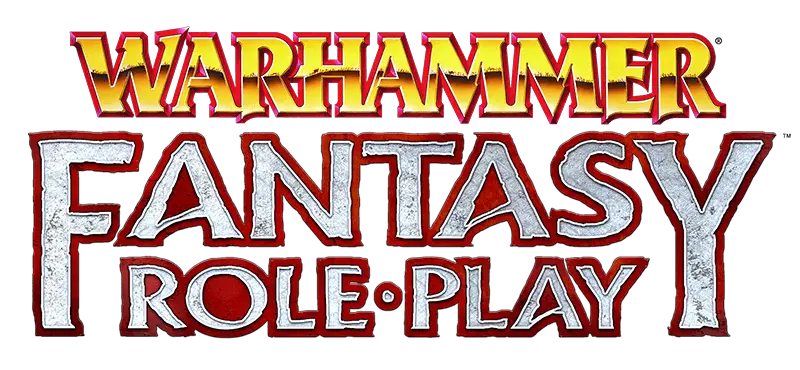
- You want a morally grey setting, with a long rich history behind it. One that’s generally pretty dark and grim, but also isn’t afraid to lean into its quirkier aspects and poke fun at itself when needed.
- You want to play a character that isn’t a hero trying to save the world but is fighting to survive against the odds and where what happens to your character has long term impacts on them, for both better and worse.
- You find the idea of playing a low fantasy character in a high fantasy world appealing, where playing a lawyer or a beggar might be just as interesting as a bounty hunter or a knight.
- You like the idea of having asymmetrical characters, where it is almost impossible to be good at everything, or indeed most things. Your social status is another characteristic of your character, as vital as their dexterity for example.
- You like very granular systems that leave plenty of room for developing your character your own way, which is simple to understand but has plenty of hidden complexity.
So what is Warhammer Fantasy Role Play?
WFRP (pronounced Wuffrupp) is, as the tagline proclaims, “A Grim World of Perilous Adventure”, announcing to anyone interested its intent to be a grim and gritty cousin to the heroic fantasy of D&D.
The Warhammer world generally fits quite easily into the “dark ages” medieval stereotypes that always seem so persistent. It’s grimy, dark, and dangerous. The peasantry live in awful conditions and nobles care little for their suffering while deadly monsters roam the lands. Marauding bands of orcs, goblins, and beastmen roam the forests, while chaos god worshipping hordes attack from the north, and the vile skaven ratmen eat at the roots of the world in their giant globe-spanning techno-magic under-empire, only held in check by their chronic backstabbing disorder.
Despite these outside forces, most inhabitants of the Empire (the Holy Roman Empire analogue where your game is likely to be set) are far more fearful of being executed by state-sanctioned witch hunters than any mutated wild beast. Though, to be honest, these witch hunters might not be all that bad of an idea. Magic is wild, difficult to master, and corrupting, with your soul constantly at risk of being ripped from you and taken by a chaos god.
In short, the Warhammer world is not a particularly nice place to live. That said, there has always been something slightly tongue in cheek about the setting, and there is often quite a lot of quirkiness and humour hidden in the dark.
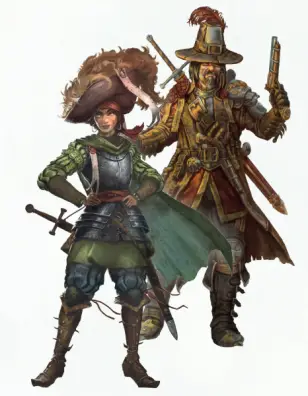
Much of it is very much a parody of our concept of the medieval eras and it is more than happy to lean into the occasional bit of ridiculous cliches. Technologically the Empire’s armies have access to gunpowder, with mortars and cannons, but they also have steam-powered tanks and pigeon bombs, a particularly rich noble injured in battle might get a mechanical prosthetic, and miscasting magic can make your head explode, or it might just make all the milk in the village go sour. The Warhammer world might be dark, but that doesn’t mean that it has to be serious. When confronted with difficult times, many of us take refuge in humour. You can either laugh or you can cry. What you do here, is very much up to your table.
Ok, what’s the difference between Warhammer Fantasy and WFRP?
The novels and games generally revolve around powerful heroes leading mighty armies to face off against each other. Warhammer Fantasy Roleplay is much more personal, on a much smaller scale. You’re more likely than not going to be playing low fantasy characters in a high fantasy world unless your characters have been significantly boosted up in power.
The Core Book, and the official adventures published so far, assume that your party will be adventuring in the Reikland, capital province of the Empire. The Empire is the setting’s equivalent of the Holy Roman Empire: a coalition of provinces and regions under the rule of an elected emperor, currently Karl-Franz I. Humans are the main inhabitants of the region, and your character is most likely to be one, though there are also Dwarfs and Halflings, and even the rare High or Wood Elf.
Your character is very unlikely to be a powerful mage or an important noble. If you’re using the random generation rules for your character (that I highly recommend) then you’re much more likely to be a beggar, rat catcher or simple villager. As well as providing you with the list of talents and characteristics you can learn, your career will also determine your social status, and much like in real life not everyone is made equal opportunities. Your party will be made up of the general citizens of the empire, and while one day you might rise to greatness, it’s also pretty likely that you’ll end up bleeding to death early on in your career after a botched leg amputation.
You’ll be playing through the personal stories of the Empire’s inhabitants, generally trying to do your job, or at least a job, just to survive. While the characteristics are reminiscent of what you can find in the wargame, your characters will also be much more fleshed out with various skills and talents that they will develop over the course of their careers, as well as in the lingering injuries and traumas that they might pick up as well.
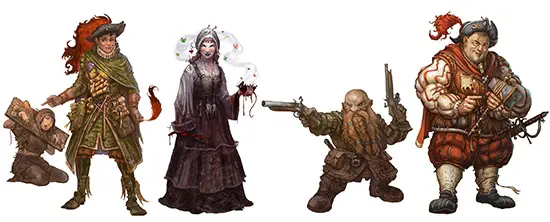
Great, so how does it work?
At its heart, Warhammer Fantasy Roleplay is a percentile system based on D10s and D100s. Your character can have three different types of tests based on this system: simple, dramatic and opposed.
A “Simple Test” is a basic pass/fail system. You have a target number set by your various characteristics and talents, plus any modifier that the GM might add to take into account difficulty, and your aim is to roll under it. The better your characteristics, the higher the goal, and the easier it is to roll under it.
Dramatic Tests are for when a basic yes/no answer isn’t enough and you need a bit more flair. These tests give you a Success Level (SL) which let you know how much you succeeded or fail by, leading to an array of possible outcomes along the lines of “No, but…” or “Yes, and…”. You calculate your success level by deducting the “tens unit” from your dice throw from the “tens unit” of your target level. For example, if you need to roll below 35 and you roll a 72, your SL is -4 (because 3 – 7 = -4), which is an “Impressive Failure”, where not only do you fail, but something else goes wrong too.
Finally, as their name suggests, Opposed Tests are for when you’re testing your skills against an opponent, who is also rolling. The most common example of this is how combat works. These work by having both parties make a Dramatic Test, and then comparing the results, with the higher success level winning. This can lead to both participants failing their individual tests, but with one of them coming out on top because they suck less.
There are also Extended Tests, which are just multiple Dramatic Tests where you add the different results together until you get to a certain level. They are for when you’re trying to do something that would require several steps.
The biggest hurdle to picking the system up is likely to be learning the different skills that can be used to decide the target number of the checks. For example, if a character wants to get a good price on something you’ll want a Haggle check, so their target number will be based on their Fellowship characteristic (each skill has an associated characteristic) + their Haggle skill if they have one. If they don’t have the haggle skill, then they just use plain Fellowship. The list of skills is quite long and trying to remember what skills exist when you need someone to make a roll can take a bit of practice. But don’t worry keep things simple to start. You can always default to asking for a basic characteristic check (Fellowship in our above example), and rely on your players pointing out if they have any appropriate skills (such as Haggling). This means that you only have to start out with learning what the ten different characteristics represent, rather than all the possible skills.
Everything you do in the game will be resolved with one of these tests, making the system relatively easy to pick up initially though there are plenty of extras that can seem overwhelming at the start. This is especially the case in combat, where you will be adding critical hits, fumbles, miscasts and misfires, as well as various bonuses or penalties to take into account various possible combat difficulties. There are also various conditions (bleeding, entangled,…) that inflict temporary effects, or more longterm problems such as various injuries, diseases, and chaos corruption.
All of these extra mechanics (and the many, many tables that go with them) add depth to the world, and a lot of the general challenge of the game, but they’re not really all that important to start off with if you’re worried about not being able to keep a handle on everything from that start. You can ignore most of it and refer to it as you go, adding in more complexity along the way once everyone around the table has grasped the basics, one no one should be overly impacted if you forget a +20 bonus because they’re aiming at a large target for example.
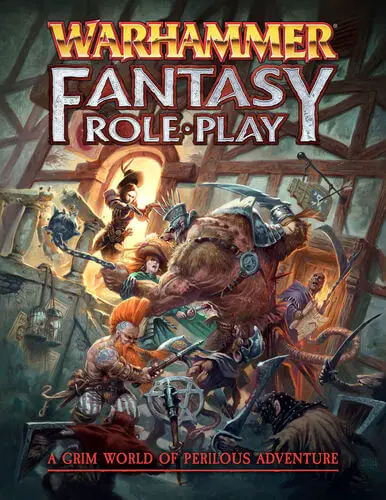
Enough of this boring mechanical stuff. How does it feel to play?
WFRP is gritty, both in tone and play. You are low fantasy characters in a high fantasy world, trying their best to survive and hopefully come out on top. Combats are generally brief and bloody, and wits and guile should probably be your first course of action. WFRP has a certain reputation for being deadly, though it’s probably not deserved.
You have a relatively high number of wounds (the game’s term for hit points) at a starting level compared to what most adversaries will dish out. It’s of course possible to be killed rapidly, after a particularly dangerous encounter or just pure bad luck, but that’s the case in a lot of combat-heavy RPGs, especially at low levels. Where it differs, however, is over time. There is no automatic increase in available health when you level up. Indeed if you don’t invest your XP in the right characteristics, you can easily have the same amount of wounds at the start as you do 50 hours into the game. In fact, you could well end up severely penalised by lingering injuries slowly working you down. This is not heroic fantasy. WFRP gets its reputation not from the sudden risk of death, but from the long slow death, being worn down by the hard life that is just trying to exist.
Characters have 10 characteristics, plus skills, all of which can be improved with XP, plus talents that can be picked up, and money to be spent on various items. They will be able to choose from 64 careers, each with 4 levels inside them, and can move from one career to another if they so wish. This highly granular system leaves a lot of room for personalisation, and evolution. The world will however also impose its own toll on the characters, moulding them through illness and injuries. It’s a game that leaves a lot of room open for the discovery of who your character is. It is largely possible to start out as a rat catcher and make your way to becoming a guard, before maybe retiring as a trader.
The systems of Warhammer Fantasy Roleplay fit together nicely to provide a deep and rich storytelling experience. Characters aren’t created equally. Lives in this world will be brutal and dark. Yet there is also plenty of room for humour and successes. You can roll the lucky hit and cleave a might opponent in two, or fumble it completely, though possibly still coming out on top if your opponent is even more incompetent. Don’t try to min-max the experience, don’t worry too much about the future, live your character in the moment and lean into the randomness to get the most out of the experience, you never know when that XP you spent on training your Dancing skill might come in handy.
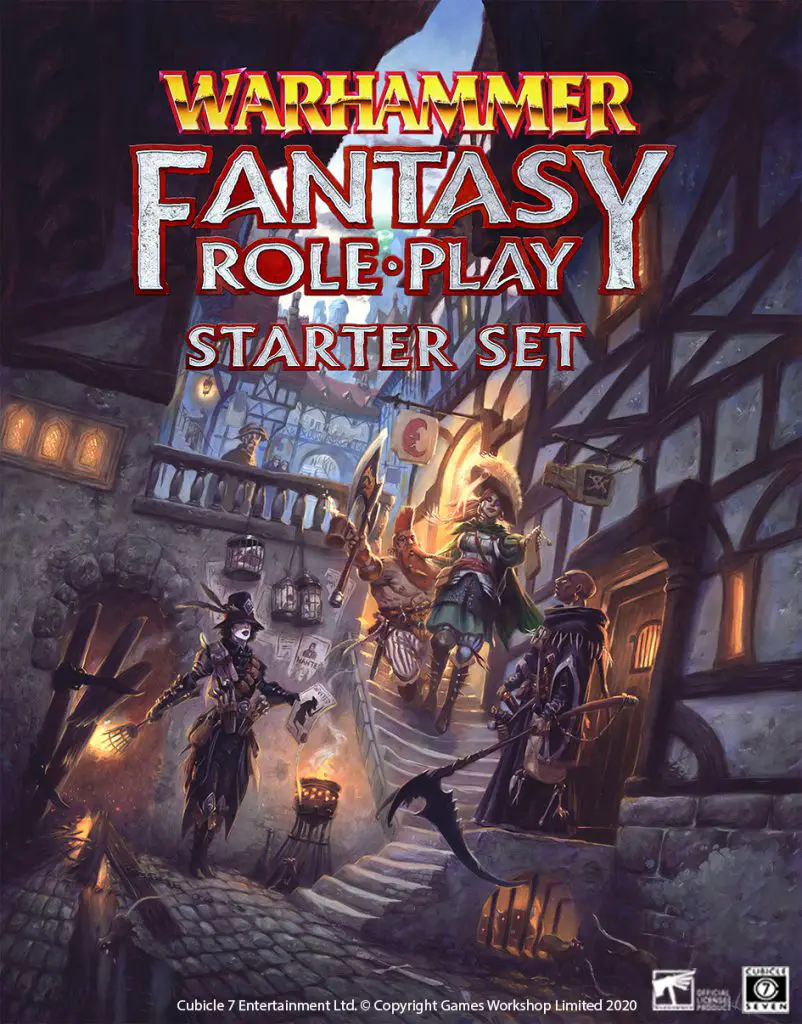
I want to play. What do I need to read?
So you’re interested in playing WFRP, and you want to know where to start? If you (or your GM) has picked up the Starter Set, then you won’t have too much work to do apart from picking your pre-made character sheet. There are a few handouts you should probably take a look at too, though the adventures are actually designed so that you pick up most of the rules as you go.
If you want to make your own character, you’re going to need the Core Rulebook. I suggest you start, in a great show of originality, at the beginning. Specifically, the 6 double-page artworks and the 4 page in universe letter that follows them. They do an excellent job of setting the scene and introducing the world. Even if you’re familiar with the Warhammer universe, it’s worth it just to get more information about this very specific corner of the world, and get in the mood.
After that, you’ll need to follow the steps outlined in Chapter 2. I’d highly recommend that you lean into the chaos and roll randomly, especially as it can help cut down on trying to figure out what you want to play right from the start. If you do decide to choose rather than roll, you’ll need to flip through Chapter 3 on the different classes and careers to make your choice. Once you’ve got your career and race, you can choose the skills and talents proposed from Chapter 4, and you might also need to reference Chapter 7 or 8 if your character has access to religion or magic respectively. Finally, it’s a quick jaunt to Chapter 11, the consumer guide, to get the statistics for your weapons and armour, and you’re done for character creation.
That should be enough to be able to start playing, assuming you’ve read the above section about mechanics to have a basic grasp of how things work, though if you’d like to dig into it a bit more you can acquaint yourselves with Chapter 5 on rules.
I’m going to be running this thing. What should I be looking up?
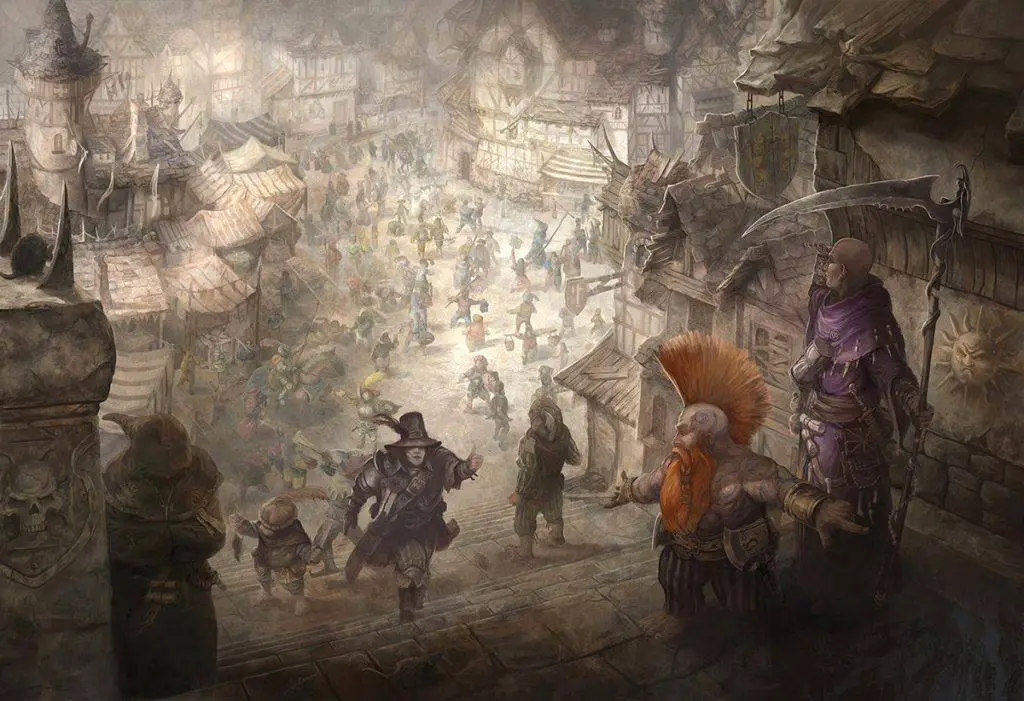
As usual, you’re going to have more work than your players, such is the burden of the GM. If you’re running the Starter Set, then you should probably give the whole adventure booklet a read, plus the guide to Ubersreik that accompanies the set. While you go through each part, of the adventure booklet, use the reference sheets to bulk out the explanations provided where necessary.
If you’re working from the core rulebook, however, I’d advise starting with the introduction (like the players) and then moving on to chapter 2 for the character details, before moving on to chapter 5, to get a good grasp of the rules, as well as chapter 9, which is a short chapter on GM advice. Chapters 3, 4, 7, 8, and 11 can be referred to depending on the choices your players make about their characters, though I’d suggest giving them all a brief look through at least to start to get a feel for how it all works.
If you’re looking to make things easy on yourself, you might want to check out some of the official adventures, notably “If Looks Could Kill” which is available for free on Cubicle 7’s website or DriveThruRPG, though they have also knocked out several other excelent adventures for 4e. If you’re more willing to try and create your own then chapter 10 describes the setting in detail, and I’d advise reading it in any case when you have time. Chapter 12 will give you all the enemies that you’ll need to start out with. Once your first adventure is drawing to a close, you’ll probably want to brush up on chapter 6, “Between Adventures”, which is a really fun description of downtime activities that will also explain why the characters are in constant need of money and adventure.
You can check out all of Cubicle 7’s Warhammer releases on their store or on DriveThruRPG.
Have strong thoughts about this piece you need to share? Or maybe there’s something else on your mind you’re wanting to talk about with fellow Fandomentals? Head on over to our Community server to join in the conversation!

